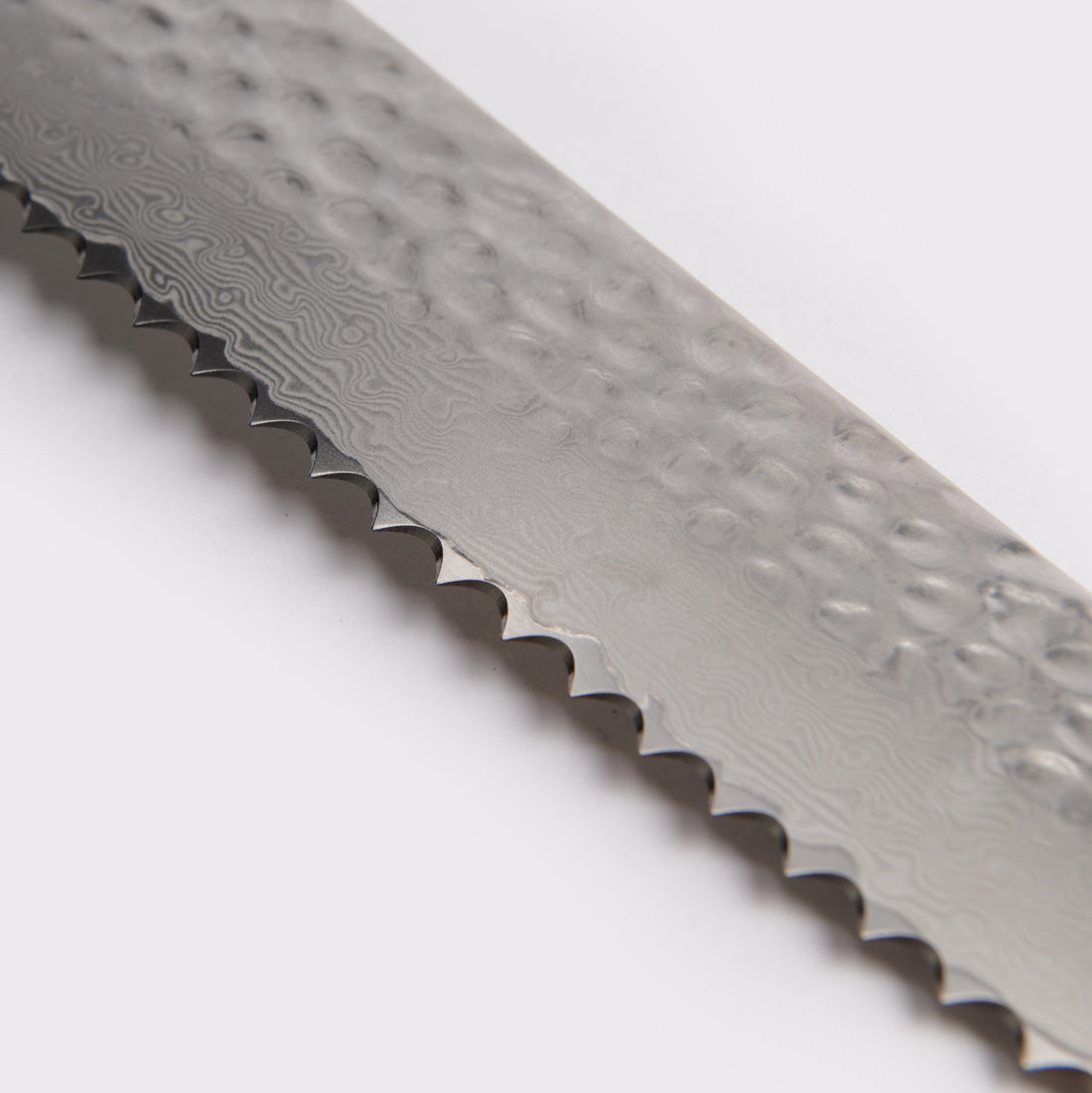
How to Cut Bread Without Crushing It: 5 Common Mistakes
Share
Introduction
There’s nothing worse than baking or buying a beautiful loaf of bread… only to crush it while slicing.
Whether it’s a crusty sourdough, a soft brioche, or a baguette with an airy crumb, the way you cut it makes all the difference. In this guide, we’ll break down the top 5 mistakes people make when cutting bread, and how to avoid them, starting with the knife you use.
If you’re tired of squished slices and torn crusts, this one’s for you.
1. You’re Using the Wrong Knife
The most common mistake? Using a chef’s knife or dull utility knife to slice bread.
Why it matters:
Bread, especially artisanal loaves, has a tough exterior and delicate interior. A flat-edged knife pushes down and crushes instead of slicing cleanly.
✅ Use a serrated bread knife
A proper bread knife has a long, serrated blade that grips and glides through crust without putting pressure on the crumb. The Dune Bread Knife by SEKKIN is a great example: razor-sharp, perfectly balanced, and designed to cut through crusty loaves with ease.
2. You’re Using Too Much Pressure
Pressing too hard is a guaranteed way to flatten your bread.
Why it happens:
If your knife is dull or not serrated, you naturally compensate by pushing down. But good slicing is about letting the blade do the work, not brute force.
✅ Use gentle, sawing motions
A sharp serrated knife only needs a light touch. Start at the edge, move with intention, and use smooth back-and-forth motions.
3. You’re Cutting While It’s Too Hot
Fresh out of the oven? Tempting. But slicing warm bread is a mistake.
Why it matters:
When bread is hot, the crumb hasn’t fully set. Slicing too early leads to gummy, uneven slices and a crushed structure.
✅ Wait at least 1 hour before slicing
Let your loaf cool completely to room temperature before cutting. This helps preserve its texture, especially with sourdough or slow-fermented breads.
4. You’re Not Supporting the Loaf Properly
How you hold the bread matters almost as much as how you slice it.
Common mistake:
Placing the bread flat and pressing down makes it unstable, especially for round loaves or soft rolls.
✅ Use a breadboard or towel to stabilize
Hold the loaf gently but firmly, and consider placing a towel underneath to keep it from sliding.
5. Your Knife Isn’t Long Enough
Short blades = short strokes = crushed slices.
Why it matters:
Using a knife that’s too small forces you to saw unevenly, increasing pressure and reducing control. A long, serrated blade (at least 8 inches) allows for smooth, even strokes.
✅ Choose a long, professional bread knife
The Dune Bread Knife was designed with length, weight, and balance in mind, giving you full control with every cut.
Conclusion: Respect the Loaf
Slicing bread may seem simple, but it’s an art, and the right tools make all the difference.
If you’re serious about preserving the crust, protecting the crumb, and serving perfect slices, start with a knife that’s made for the job.
